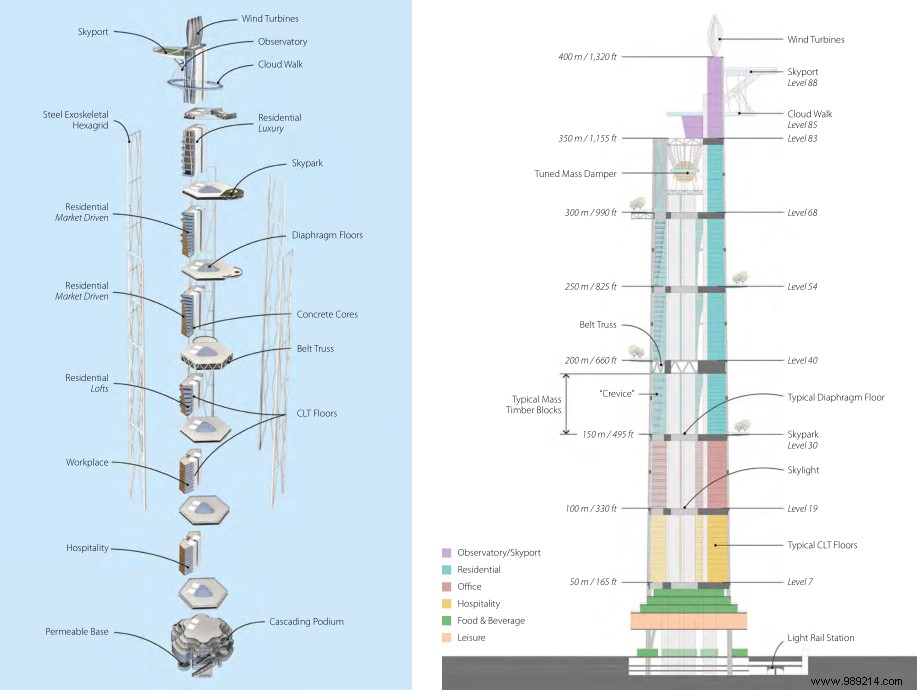The current Covid-19 pandemic is giving architects ideas. Recently, a Chinese firm proposed an unprecedented skyscraper concept for the city of Seattle. This will be part of a post-pandemic era by offering various solutions concerning health and well-being in particular.
Shanghai-based architecture firm 3MIX recently presented (PDF in English/9 pages) a brand new skyscraper concept. Baptized Seattle 2030, it should – as its name suggests – see the light of day in the center of the city of Seattle (United States) in 2030. It is a building 88 floors over 400 meters tall whose objective is to redefine the typologies of life, work and leisure in the urban environment. Naturally, this project partly finds its inspiration in the current Covid-19 pandemic.
According to the architects, the obelisk-shaped structure consists of three interconnected "sub-towers" in a hexagonal configuration. These are also divided into eight stacked "super blocks" comprising no less than 150,000 m² for various uses. This building offers zones of different densities to facilitate quarantines and responds to issues related to social distancing and daily well-being.
However, these areas are in direct connection with parks (on the 30th, 40th, 54th and 68th floors), waterfalls, an air bridge, vertical gardens, cycle paths and even a port for drones (88th).

You should know that 90% of the composition of the skyscraper incorporates solid wood, sequestering carbon and promoting insulation against cold and heat. On the roof are wind turbines providing energy and pulsing the air inside. The architects also imagined a kind of huge yellow globe on the upper floors, serving as a shock absorber in the event of an earthquake or strong storm.
For those responsible for the project, this Seattle 2030 project aims to define new paradigms concerning skyscrapers in the United States but in other countries such as China, Australia, South Korea and Singapore. The project responds to recent health and well-being concerns by rejecting the notion of "hermetically sealed" buildings.
Finally, we are talking here about a fairly recent architectural approach:biophilic design, generally aimed at strengthening the link between inhabitants and nature . This current is notably driven by Katie Gloede, from the School of Architecture at the University of Virginia (United States). The interested party presents these principles within the framework of the ambitious Biophilic Cities Project.